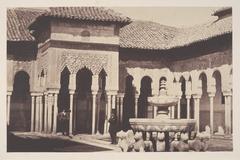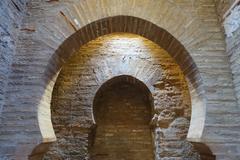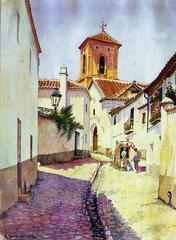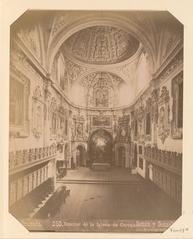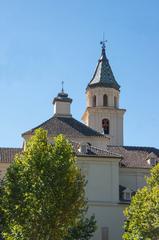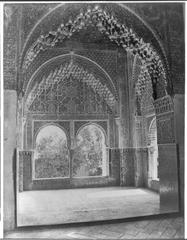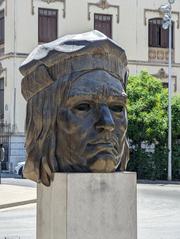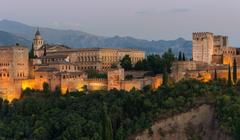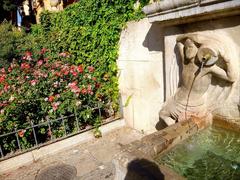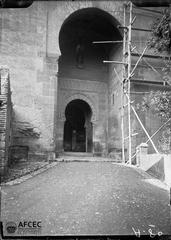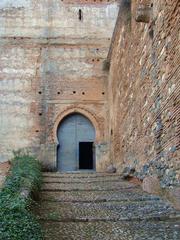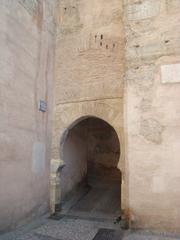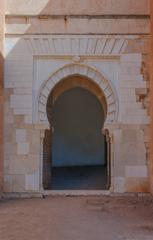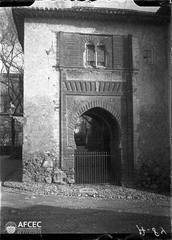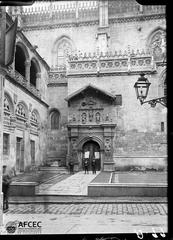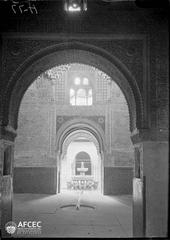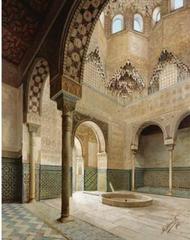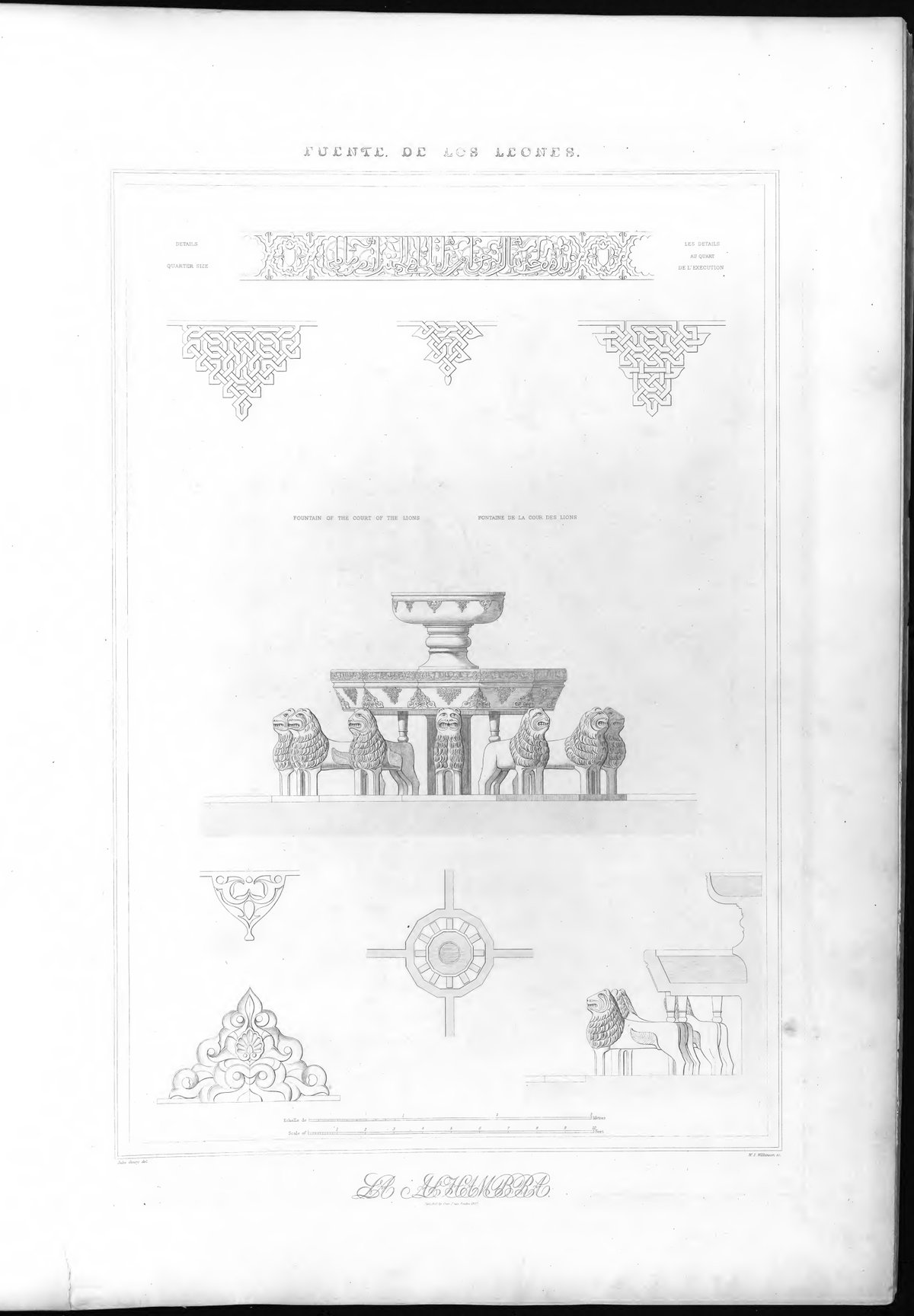
Comprehensive Guide to Visiting Alhambra, Granada, Spain
Date: 31/07/2024
Introduction
The Alhambra, an architectural marvel nestled in the hills of Granada, Spain, is a beacon of historical and cultural significance. This ancient palace and fortress complex, renowned for its Islamic architecture, offers an unparalleled glimpse into the rich heritage of the Nasrid Dynasty and the Islamic Golden Age. From its origins in the 9th century to its transformation under the Nasrid rulers in the 13th and 14th centuries, the Alhambra stands as a testament to the artistic and engineering prowess of its creators (History.com). The site, whose name means ‘red fort’ in Arabic, is characterized by its reddish walls, intricate stucco work, and lush gardens, reflecting the sophisticated tastes and artistic achievements of the Nasrid dynasty (Britannica).
The Alhambra’s significance is not limited to its Islamic roots. Following the Christian Reconquista in 1492, the complex witnessed a profound transformation under the Catholic Monarchs Ferdinand and Isabella, and later, Charles V, who introduced Renaissance elements into the existing Islamic structures (Wikipedia). This blend of cultures is a unique feature of the Alhambra, symbolizing the complex history of Spain. In 1984, the Alhambra was declared a UNESCO World Heritage Site, further cementing its status as a global cultural treasure (Our Escape Clause).
Today, the Alhambra continues to captivate millions of visitors each year, offering a mesmerizing journey through history, art, and architecture. This comprehensive guide aims to provide you with all the essential information needed for a memorable visit to the Alhambra, including practical tips on tickets, visiting hours, travel advice, and much more.
Table of Contents
- [Introduction](#introductionintroduction)
- [History of the Alhambra](#history-of-the-alhambrahistory-of-the-alhambra)
- [Origins and Early Construction](#origins-and-early-constructionorigins-and-early-construction)
- [Nasrid Dynasty Contributions](#nasrid-dynasty-contributionsnasrid-dynasty-contributions)
- [Architectural Marvels](#architectural-marvelsarchitectural-marvels)
- [The Christian Reconquista and Subsequent Changes](#the-christian-reconquista-and-subsequent-changesthe-christian-reconquista-and-subsequent-changes)
- [Decline and Rediscovery](#decline-and-rediscoverydecline-and-rediscovery)
- [Restoration Efforts](#restoration-effortsrestoration-efforts)
- [Influence and Legacy](#influence-and-legacyinfluence-and-legacy)
- [UNESCO World Heritage Site](#unesco-world-heritage-siteunesco-world-heritage-site)
- [Visitor Experience](#visitor-experiencevisitor-experience)
- [Practical Information for Visitors](#practical-information-for-visitorspractical-information-for-visitors)
- [Tickets and Visiting Hours](#tickets-and-visiting-hourstickets-and-visiting-hours)
- [Travel Tips](#travel-tipstravel-tips)
- [FAQ](#faqfaq)
- [Conclusion](#conclusionconclusion)
History of the Alhambra
Origins and Early Construction
The Alhambra, located on the Sabika hill in Granada, Spain, is a palace and fortress complex that stands as a testament to the grandeur of Islamic architecture. The construction of the Alhambra began in 1238 under Muhammad I Ibn al-Ahmar, the first Nasrid emir and founder of the Emirate of Granada, the last Muslim state in Al-Andalus (Wikipedia). The site had been previously occupied by earlier fortresses and the 11th-century palace of Samuel ibn Naghrillah (Wikipedia).
Nasrid Dynasty Contributions
The most significant construction phases of the Alhambra took place during the 14th century under the reigns of Yusuf I and Muhammad V. These rulers were responsible for much of the intricate and ornate designs that characterize the Nasrid Palaces today. The complex includes a series of rooms and gardens clustered around three principal courts, with extensive use of fountains and water basins, showcasing the Islamic emphasis on water as a symbol of purity and life (Britannica).
Architectural Marvels
The Alhambra is renowned for its stunning Islamic architecture, which includes intricate stucco work, tile mosaics, and carved wooden ceilings. One of the most famous features is the Court of the Lions, which exemplifies the zenith of Nasrid art with its central fountain supported by twelve marble lions (Wikipedia). The Hall of the Ambassadors, located in the Comares Palace, is another highlight, featuring a wooden dome ceiling that represents the seven heavens of Islamic cosmology (Britannica).
The Christian Reconquista and Subsequent Changes
In 1492, the Alhambra witnessed a significant shift when the Catholic Monarchs, Ferdinand and Isabella, conquered Granada, marking the end of Muslim rule in Spain. The Alhambra then became the Royal Court of the Catholic Monarchs, and it was here that Christopher Columbus received royal endorsement for his expedition to the New World (Wikipedia).
Charles V, who ruled Spain as Charles I from 1516 to 1556, made substantial alterations to the Alhambra. He commissioned the construction of a new Renaissance-style palace within the complex, designed by Pedro Machuca in 1526. This palace, known as the Palace of Charles V, stands in stark contrast to the Islamic architecture of the Nasrid Palaces (Britannica).
Decline and Rediscovery
After the expulsion of the Moors, the Alhambra fell into a period of neglect. Much of its interior was effaced, and its furniture was ruined or removed. During the Peninsular War in 1812, French forces under Horace-François-Bastien Sébastiani blew up some of the towers, causing significant damage (Britannica). An earthquake in 1821 further exacerbated the deterioration of the complex.
The Alhambra was rediscovered in the 19th century by British intellectuals and other Romantic travelers, most notably the American writer Washington Irving. His book, “Tales of the Alhambra,” published in 1832, brought international attention to the site and sparked interest in its preservation (Wikipedia).
Restoration Efforts
The first significant restoration efforts began in 1828, led by the architect José Contreras and funded by Ferdinand VII. These efforts aimed to repair and rebuild the damaged sections of the Alhambra, preserving its historical and architectural integrity (Britannica). Since then, numerous restoration projects have been undertaken to maintain and restore the Alhambra, making it one of the first Islamic monuments to become the object of modern scientific study (Wikipedia).
Influence and Legacy
The Alhambra has had a lasting influence on both Islamic and Western architecture. After the Christian conquest, it was nostalgically remembered in some Muslim societies and influenced later examples of Islamic architecture, such as the Saadian dynasty’s constructions in Morocco (Wikipedia). In the West, the Alhambra inspired the Alhambresque style, a fanciful, ornamental architectural style that became popular in the 18th and 19th centuries (Wikipedia).
UNESCO World Heritage Site
In 1984, the Alhambra, along with the Generalife and the Albayzín (Granada’s medieval quarter), was declared a UNESCO World Heritage Site. This designation has helped to ensure the preservation and protection of the Alhambra, allowing millions of visitors each year to experience its historical and architectural splendor (Our Escape Clause).
Visitor Experience
Today, the Alhambra is one of Spain’s most visited tourist attractions, drawing millions of visitors annually. The complex offers a unique window into Spain’s Islamic past, with its mesmerizing palaces, beautiful gardens, and stunning views of Granada. Visitors can explore various sections of the Alhambra, including the Nasrid Palaces, the Alcazaba (the fortress), and the Generalife (the summer palace and gardens) (Our Escape Clause).
Practical Information for Visitors
Tickets and Visiting Hours
Given its popularity, it is essential to plan your visit to the Alhambra in advance. Tickets often sell out well ahead of time, especially for the Nasrid Palaces, which have restricted entry times. It is advisable to book tickets online and choose a specific time slot for your visit. The Alhambra is open year-round, but hours can vary depending on the season, so it’s a good idea to check the official Alhambra website for the most up-to-date information (Alhambra Patronato).
Travel Tips
- Best Times to Visit: The best times to visit the Alhambra are during the spring (April to June) and fall (September to November) when the weather is pleasant, and the crowds are more manageable (España Guide).
- Accessibility: The Alhambra is accessible to people with disabilities, but some areas may be challenging to navigate due to uneven terrain. It’s recommended to check the accessibility information on the official website before your visit (Alhambra Patronato).
- Nearby Attractions: While in Granada, take the opportunity to explore nearby attractions such as the Albayzín district, the Royal Chapel, and the Cathedral of Granada.
- Guided Tours: Consider booking a guided tour for a more in-depth understanding of the Alhambra’s history and architecture. Many tours are available in multiple languages (The Tour Guy).
- Photography Spots: Some of the best photographic spots include the Court of the Lions, the Generalife Gardens, and the panoramic views from the Alcazaba.
- Comfortable Walking Shoes: Due to the extensive walking required to explore the complex, comfortable walking shoes are recommended.
- Identification: Visitors should bring an official government ID, such as a passport, as it is required for entry.
FAQ
What are the Alhambra’s opening hours?
- The Alhambra is open daily, but hours can vary by season. It’s best to check the official website for current opening hours (Alhambra Patronato).
How much do Alhambra tickets cost?
- Ticket prices vary depending on the type of visit and any additional services like guided tours. Visit the official Alhambra website for the latest pricing information (Alhambra Patronato).
Is the Alhambra accessible to people with disabilities?
- Yes, the Alhambra has made efforts to be accessible to people with disabilities, though some areas may be challenging. Check the official website for detailed accessibility information (Alhambra Patronato).
Conclusion
In conclusion, the Alhambra stands as a monumental testament to the rich tapestry of Granada’s history, blending Islamic, Christian, and Renaissance influences into a single, awe-inspiring complex. Its architectural brilliance, historical significance, and cultural legacy make it a must-visit destination for anyone traveling to southern Spain. The Alhambra’s journey from its origins as a small fortress to its current status as a UNESCO World Heritage Site is a story of resilience, artistic achievement, and cultural fusion (History.com; Wikipedia).
Visiting the Alhambra is not just about exploring a historical site; it is about immersing oneself in a narrative that spans centuries, experiencing the grandeur of the Nasrid Palaces, the strategic might of the Alcazaba, and the serene beauty of the Generalife Gardens (Our Escape Clause). Whether you are a history enthusiast, an architecture lover, or simply a curious traveler, the Alhambra offers a unique and enriching experience that leaves a lasting impression.
To make the most of your visit, plan ahead by booking your tickets early, considering the best times to visit, and familiarizing yourself with the layout of the complex. Whether you choose to explore independently or opt for a guided tour, the Alhambra promises a journey that is as educational as it is enchanting. Don’t forget to download the Audiala mobile app for more travel tips and updates, and follow us on social media to stay connected and informed about other exciting travel destinations.



